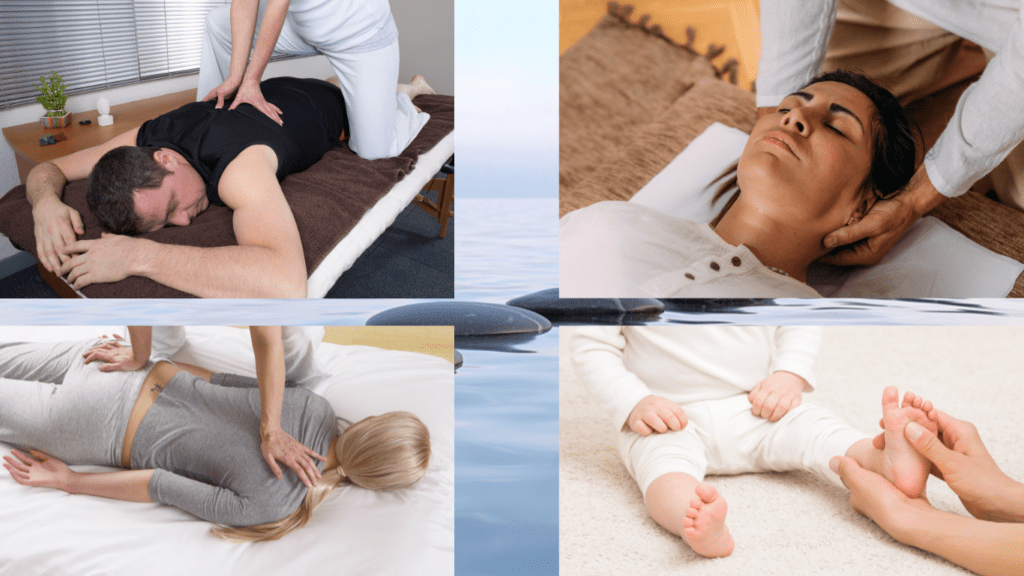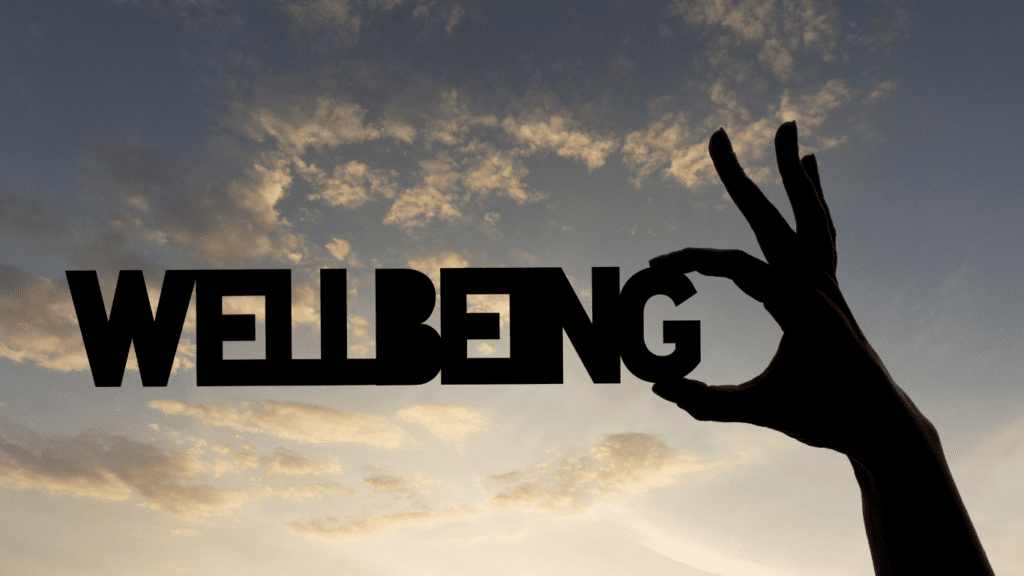Shiatsu

Why Choose a Shiatsu Massage?
Shiatsu massage is a deeply rejuvenating therapy rooted in traditional Japanese healing practices. It offers a holistic approach to well-being by combining physical manipulation with energetic balance. Here’s why incorporating Shiatsu into your wellness routine can be highly beneficial:
Relieve Muscle Tension and Improve Flexibility
Shiatsu involves rhythmic pressure and stretching techniques that release muscle tension, enhance flexibility, and improve joint mobility. This makes it ideal for relieving aches, stiffness, or discomfort caused by physical stress or posture-related issues.
Support Energy Flow
At the core of Shiatsu is the belief in the body’s energy flow, or Ki. By applying pressure along the body’s meridians, Shiatsu restores balance and promotes the harmonious circulation of energy, leaving you feeling revitalized and aligned.
Reduce Stress and Promote Relaxation
Through its calming techniques, Shiatsu induces deep relaxation and helps to lower stress levels. It activates the parasympathetic nervous system, reducing tension and fostering a sense of peace and well-being.
Boost Circulation and Vitality
Shiatsu stimulates blood circulation and lymphatic flow, improving the delivery of oxygen and nutrients to tissues while enhancing detoxification. This increased circulation contributes to overall vitality and health.
Address Digestive and Emotional Imbalances
Shiatsu is known for supporting overall harmony in the body. Its techniques can help regulate digestion, alleviate headaches, and even improve emotional well-being by reducing anxiety and encouraging a sense of balance.
Non-Invasive and Personalized
Shiatsu is performed over clothing, making it a gentle and non-invasive treatment suitable for individuals of all ages and conditions. Each session is tailored to your specific needs, ensuring a personalized experience that targets your unique concerns. By addressing both physical and energetic imbalances, Shiatsu offers a holistic approach to wellness. It focuses on the connection between body and mind, helping you feel more centered and in tune with yourself.
Choosing Shiatsu is not just about relieving discomfort—it’s about nurturing your body and soul, achieving balance, and embracing relaxation. Experience the transformative benefits of Shiatsu and take a step toward a healthier, more vibrant you.
Shiatsu focuses on the energy pathways known as meridians. These meridians are channels through which Ki (life energy) flows, and they are essential for maintaining balance and harmony in the body. When Ki becomes blocked or imbalanced, it can lead to physical or emotional discomfort. Shiatsu works to stimulate and balance these meridians, promoting overall well-being. Below is an overview of the key meridians used in Shiatsu:
Lung Meridian (LU)
Pathway: Runs from the chest to the thumb along the inner arm.
Associated Functions: Governs respiration, immune strength, and emotional clarity. Balancing this meridian can alleviate fatigue, sadness, and respiratory issues.
Large Intestine Meridian (LI)
Pathway: Extends from the index finger to the side of the nose via the arm and shoulder.
Associated Functions: Supports digestion, elimination, and releasing emotional baggage. Balancing this meridian can help with constipation and letting go of negative emotions.
Stomach Meridian (ST)
Pathway: Runs from below the eye, down the torso and leg, to the second toe.
Associated Functions: Influences digestion, appetite, and energy levels. It is helpful for addressing digestive issues, fatigue, and worry.
Spleen Meridian (SP)
Pathway: Extends from the big toe up the inner leg to the chest.
Associated Functions: Supports digestion, immune health, and emotional grounding. Balancing this meridian is beneficial for nurturing energy and stabilizing emotions.
Heart Meridian (HT)
Pathway: Runs from the chest to the little finger along the inner arm.
Associated Functions: Governs emotional health, circulation, and relationships. It supports calmness and joy when in balance.
Small Intestine Meridian (SI)
Pathway: Runs from the little finger, up the arm and shoulder, to the ear.
Associated Functions: Supports absorption and assimilation, both physically and emotionally. It aids in clarity and decision-making.
Kidney Meridian (KI)
Pathway: Runs from the sole of the foot, up the inner leg, to the chest.
Associated Functions: Governs energy reserves, water metabolism, and emotional willpower. Balancing this meridian strengthens vitality and resilience.
Bladder Meridian (BL)
Pathway: Extends from the inner eye, down the back, and along the legs to the little toe.
Associated Functions: Affects the nervous system, urinary health, and relaxation. It helps release tension stored in the back and shoulders.
Liver Meridian (LV)
Pathway: Runs from the big toe, up the leg and torso, to the chest.
Associated Functions: Regulates emotions, detoxification, and blood flow. Balancing the liver meridian helps ease frustration and improve adaptability.
Gallbladder Meridian (GB)
Pathway: Starts at the outer corner of the eye and runs down the side of the body to the fourth toe.
Associated Functions: Supports decision-making, energy flow, and stress release. Balancing it can ease tension and headaches.
Pericardium Meridian (PC)
Pathway: Extends from the chest to the middle finger via the inner arm.
Associated Functions: Protects the heart and supports emotional connection. It helps reduce anxiety and enhance emotional stability.
Triple Warmer Meridian (TW or TE)
Pathway: Runs from the ring finger, up the arm, to the side of the eyebrow.
Associated Functions: Balances the body’s heating and cooling systems, supporting immunity and stress response.
Each meridian corresponds to specific organs and functions within the body, as well as emotional and spiritual aspects. Shiatsu practitioners use gentle pressure and stretching techniques to unblock and harmonize these energy pathways, supporting holistic health and well-being.
Here’s how a Shiatsu Massage is typically performed:
Setting the Stage: Shiatsu is usually done on a comfortable mat or futon placed on the floor. The client remains fully clothed, wearing loose, comfortable attire to allow freedom of movement.
Diagnosis Through Touch: I will begin by assessing the client’s body through touch and pressure to identify areas of tension, imbalance, or energy blockages
Application of Pressure: Using fingers, thumbs, palms, and sometimes elbows, I will apply firm pressure to specific points on the body known as acupressure points or meridians. This stimulates energy flow and promotes balance in the body.
Incorporating Movement: Gentle stretches and joint rotations may be included to improve flexibility, loosen tight muscles, and enhance circulation.
Focus on Breathing: I may guide the you to synchronize your breathing with the massage movements to encourage relaxation and deeper energy flow.

